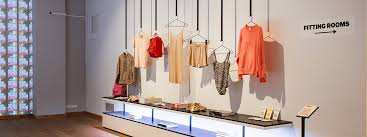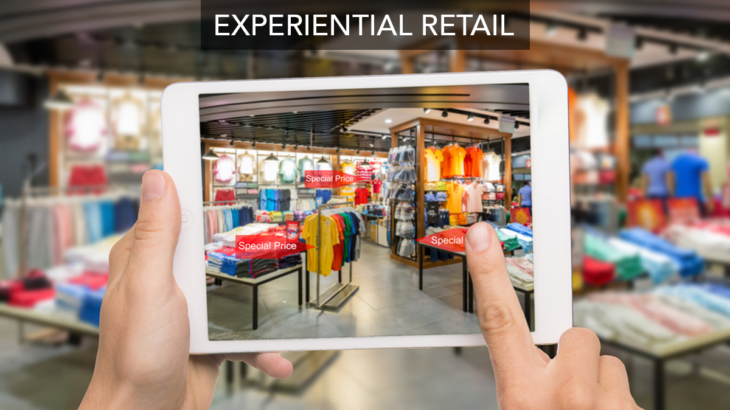Over the last decade, the retail scene has changed dramatically, owing to technological improvements and shifting consumer tastes. One of the most prominent trends in the fashion business has been the rise of experiential retail, which focuses on creating immersive and interesting shopping experiences. This change is more than just selling items; it is also about creating memorable experiences that connect with customers on a deeper level. Let’s look at the notion of experiential retail, how it has impacted the fashion industry, and how brands are using it to boost customer engagement and loyalty.
Experiential retail is a business approach that focuses on giving customers unique and engaging experiences that go beyond ordinary shopping. This strategy can include interactive displays, personalized services, in-store events, and the integration of digital technologies. The goal is to provide a shopping experience that is not just practical but also enjoyable and memorable. The fashion sector, which is recognized for its continual innovation and originality, has been quick to embrace experiential retail.
Fashion firms are discovering new methods to interact with their audience as customers demand more distinctive and personalized experiences. This tendency is most seen in the emergence of concept stores, pop-up shops, and flagship sites that offer more than simply merchandise. Nike and Adidas, for example, have created flagship stores with interactive features such as augmented reality fitting rooms, virtual sneaker customization, and in-store sports activities. These experiences not only entice customers but also encourage them to spend a longer time in the business, boosting the likelihood of making a purchase.
The Role of Technology
Technology plays an important part in the advancement of experiential retail. AR, virtual reality, and artificial intelligence are altering how consumers interact with fashion firms. Customers can virtually try on garments and accessories using Augmented Reality, resulting in a more dynamic and smooth buying experience. For example, Gucci’s augmented reality software allows users to see how trainers will look on their feet without having to physically try them on. Virtual Reality generates immersive settings that take clients to other worlds. Tommy Hilfiger has embraced virtual reality to provide virtual fashion shows, allowing fans to experience the excitement of a runway event from the comfort of their own homes. AI-powered chatbots and virtual assistants personalize shopping experiences by making unique recommendations based on a customer’s preferences and purchasing history. This technology improves customer service and fosters deeper relationships between brands and consumers.
Engaging and engaging shopping experiences enable customers to spend more time in the store, try new products, and make more educated purchasing decisions. Increased engagement can result in improved sales and customer satisfaction. When customers have positive and memorable interactions with a brand, they are more inclined to return and suggest it to others. Experiential shopping promotes brand loyalty by establishing emotional ties and a sense of belonging. Unique and immersive events are frequently shared on social media, increasing brand reach and drawing new customers. Word-of-mouth marketing is an effective tactic in the fashion sector, where personal recommendations and social evidence may considerably influence purchasing decisions.
Challenges and Considerations
While it has many advantages, it also brings some hurdles that companies must overcome. Creating immersive and engaging experiences may be costly, necessitating large investments in technology, design, and labor. Brands must carefully assess their budget and guarantee that the return on investment equals the costs. Customers increasingly expect seamless experiences across online and offline channels, so brands must maintain consistency in their messaging and service. This necessitates the proper integration of digital and physical retail tactics. The use of technology in experiential retail presents privacy problems, particularly when it comes to collecting and using customer data. To develop trust, brands must be upfront about their data practices and prioritize client privacy.
With ongoing technological breakthroughs and rising consumer desire for one-of-a-kind experiences, the future of experiential fashion retail is bright. As firms innovate and experiment with new methods to connect their customers, experiential retail is set to become the norm in the fashion industry. As AI and data analytics advance, brands will be able to provide more personalized and customized experiences. From tailored product recommendations to bespoke apparel designs, personalization will be critical in the future of fashion retail. With growing awareness of sustainability and ethical issues, firms must incorporate these principles into their experiential retail strategies. Offering environmentally friendly products, encouraging sustainable practices, and developing experiences that reflect these principles will appeal to conscious consumers.
Experiential retail marks a fundamental shift in the fashion business, emphasizing the necessity of providing engaging and memorable shopping experiences. Fashion firms can increase client engagement, establish loyalty, and differentiate themselves in a competitive market by embracing technology, creating fascinating shop settings, and conducting interactive events. As the retail landscape evolves, the emphasis on experiential retail is set to increase, creating exciting potential for innovation and growth in the fashion industry.





















